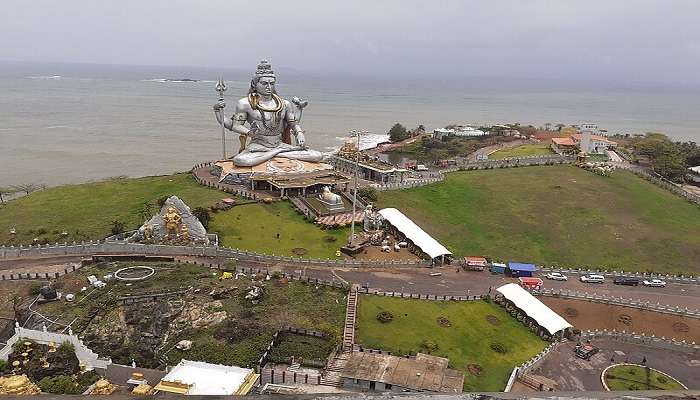Explore The Magnificence Of Phnom Bakheng Temple In Cambodia In 2026

Towering over the lush forests and rice fields of the Angkor Archaeological Park, the ancient Phnom Bakheng Temple stands as one of the most impressive and historically significant monuments in Cambodia. Built at the end of the 9th century during the rule of King Yasovarman I, this remarkable structure was the first major temple constructed in the Angkor region and served as the state temple of the Khmer capital city. Phnom Bakheng was designed as a place of worship and a symbolic representation of the mythical Mount Meru, the sacred mountain at the centre of the universe in Hindu cosmology. Phnom Bakheng Temple is a must-visit destination that will leave you in awe of the incredible achievements of the Khmer civilisation.
About Phnom Bakheng Temple
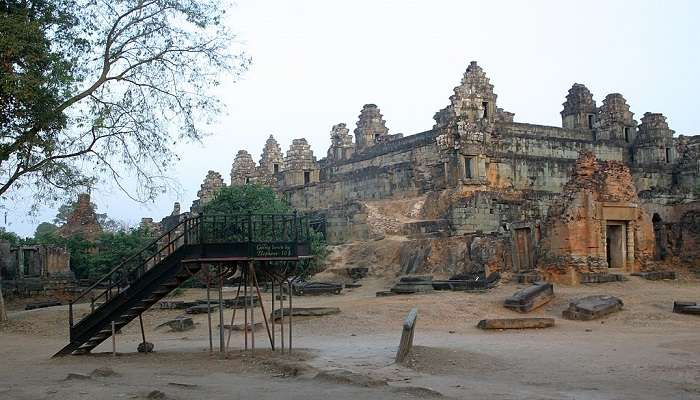
Phnom Bakheng, a 9th-century Hindu temple, is a majestic sight in Cambodia’s Siem Reap province. Standing tall on a hill 65 metres above the plain, it was the first major temple built at Angkor after the capital moved from Roluos. Built by King Yasovarman I, it served as the state temple for his new capital, Yasodharapura.
Phnom Bakheng’s design is steeped in symbolism. The temple is a pyramid with seven tiers, representing the seven Hindu heavens. Climbing to the top sanctuary, you’ll find five sandstone shrines arranged in a quincunx pattern, mirroring the five peaks of Mount Meru, the home of the gods in Hinduism.
Must Read: Baphuon Temple
History Of Phnom Bakheng Temple
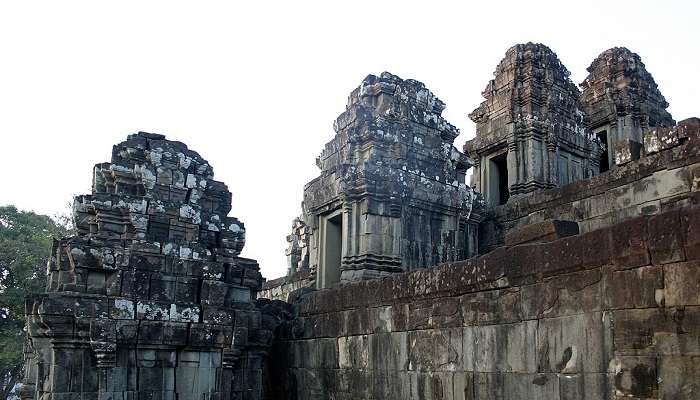
Phnom Bakheng Temple has a rich history that intertwines with the rise of the Angkor Empire. Built in the late 9th and early 10th century by King Yasovarman I (reign: 889-910), it predates the famous Angkor Wat by over 200 years. During Yasovarman’s reign, the capital of the Khmer Empire shifted from Roluos to a new location, which he named Yasodharapura. Phnom Bakheng Temple was constructed as the centrepiece of this new capital, serving as a grand state temple and a monument to the Hindu god Shiva. The temple’s design reflects its significance. Unlike the sprawling Angkor Wat, Phnom Bakheng takes the form of a temple mountain, a stepped pyramid symbolising Mount Meru, the sacred mountain believed to be the centre of the universe in Hinduism. The pyramid itself has five tiers, representing the five peaks of Mount Meru.
The temple’s role seems to have shifted over the centuries. While initially dedicated to Shiva, evidence suggests it transitioned into a Buddhist place of worship sometime after the Angkor era. Inscriptions dating to the 16th century mention a high priest restoring Buddhist statues on the site. Even a 17th-century stele written in Arabic was discovered here, hinting at a possible Muslim presence. Despite some later modifications, Phnom Bakheng’s grandeur hasn’t faded. Today, it remains a popular tourist destination, especially known for its breathtaking sunset views overlooking Angkor Wat. However, the large number of visitors has also threatened the monument’s preservation. Since 2004, the World Monuments Fund has been working alongside local authorities to conserve this significant piece of Cambodian history.
The Architecture Of Phnom Bakheng Temple
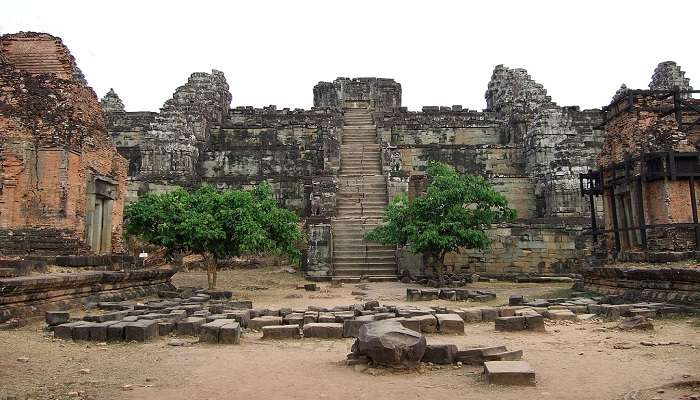
The most striking aspect of the Phnom Bakheng Temple is its location. Perched atop a steep hill 65 metres above the plain, Phnom Bakheng embodies Mount Meru, the sacred mountain believed to be the centre of the universe in Hinduism. The temple’s design further emphasises this symbolism. Phnom Bakheng features a rectangular base that rises in five tiers, culminating in a crown of five majestic towers. This tiered structure represents the seven heavens in Hindu cosmology. Each of the lower four tiers was originally adorned with 104 smaller towers strategically positioned to create a sense of symmetry. Sadly, most of these towers have collapsed over time.
The symbolism extends to the number of towers as well. The central tower signifies the world’s axis, while the 108 smaller ones represent the four lunar phases (each with 27 days). The seven levels can also be interpreted as the twelve-year cycle of Jupiter, with each terrace featuring 12 towers. As you ascend the steep stairs, you’ll encounter exquisite carvings depicting mythological creatures, celestial beings, and scenes from Hindu mythology. These intricate details add another layer of richness to the temple. summit offers a breathtaking vista. The five main towers on the top platform, arranged in a quincunx pattern (like the five dots on a dice), are believed to represent the five peaks of Mount Meru. While a 16th-century attempt to add a large seated Buddha statue around the central shrine exists, it has since been dismantled. Later in its history, Phnom Bakheng was converted into a Buddhist temple, and a monumental Sitting Buddha, now lost, was created on its upper tier.
Suggested Read: Angkor Wat In Cambodia
Phnom Bakheng Temple Timings and Entry Fees
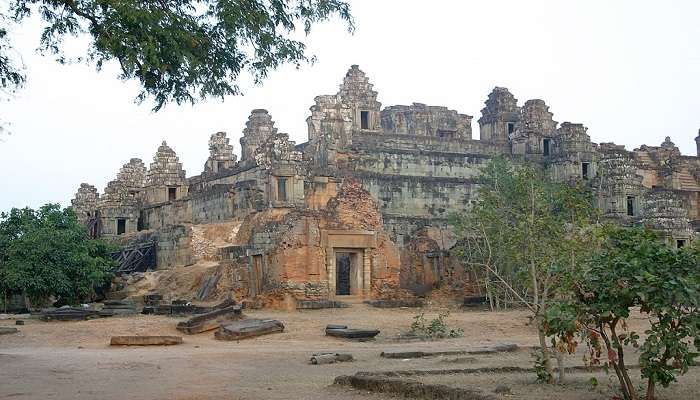
Phnom Bakheng adheres to specific timings due to its popularity as a sunset viewing point. It opens at 5:00 AM, allowing visitors to ascend the hill and witness the sunrise over the sprawling Cambodian landscape. The temple closes at 5:30 PM, ensuring a smooth exit for visitors after sunset.
Fortunately, you don’t need to purchase a separate entrance ticket to visit Phnom Bakheng. Entry is included in the Angkor Archaeological Park pass, which grants access to various temples within the complex. Here’s a breakdown of the pass options:
- One-Day Pass: Valued at $37.
- Three-Day Pass: Valued at $62.
- Seven-Day Pass: Valued at $72.
Best Time To Visit
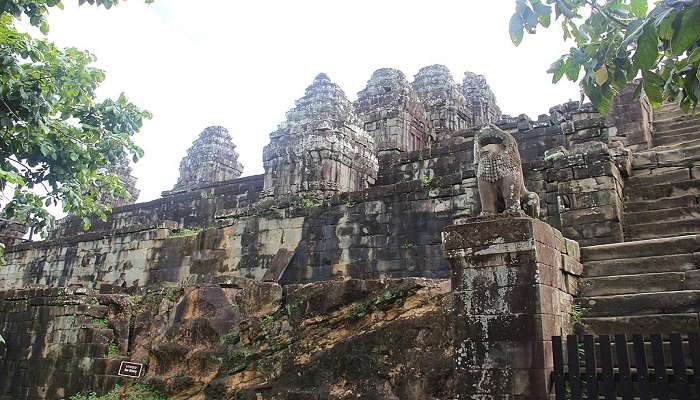
The best time to visit Phnom Bakheng Temple depends on your priorities:
- For Ideal Weather: The dry season in Cambodia falls between November and April. These months offer pleasant temperatures with minimal rainfall, making exploring the temple complex, including the climb to Phnom Bakheng, more comfortable.
- For Stunning Sunsets and Manageable Crowds: Consider the shoulder months of October and May. You’ll still experience mostly dry weather with potentially fewer crowds than during peak season.
- For the Most Vibrant Cultural Experiences: If you are interested in cultural immersion, plan your visit around the Cambodian New Year, which typically falls in April. However, be prepared for larger crowds throughout the country during this festive period.
- For Budget Travel: The rainy season (May to October) offers the cheapest hotel rates and fewer crowds. However, expect some rain showers and potentially slippery paths around the temple.
How To Reach Phnom Bakheng Temple?
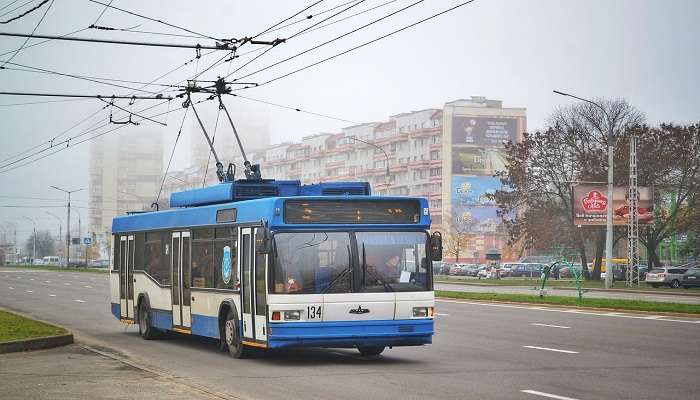
Phnom Bakheng Temple is located near Siem Reap, Cambodia, and there are several ways to reach the temple, including:
By Air
The nearest airport to Phnom Bakheng Temple is Siem Reap International Airport (around 6.6 km). You can hire a taxi or a tuk-tuk to reach the temple.
By Rail
There are no direct rail connections to Siem Reap. However, you can take a train to the Cambodian capital, Phnom Penh, and take a bus or taxi to Siem Reap from there.
By Road
Tuk-Tuk is the most affordable way to reach the temple. The ride takes about 15-20 minutes. Taxis are more expensive than tuk-tuks, around $10-15, and take about the same time. A personal car is the most expensive option; driving takes about 15-20 minutes. Be sure to get an International Driving Permit (IDP) before you go, as this is required by law in Cambodia.
Further Read: Royal Palace In Phnom Penh
Located on a hill, Phnom Bakheng Temple is an architectural marvel that offers stunning views of Angkor Wat. Climbing to the top and watching the sunset is a breathtaking experience. Don’t hesitate—plan your trip to Cambodia now for an unforgettable journey through the legacy of the Khmer Empire. Explore majestic temples and vibrant markets, and experience Cambodian hospitality at its finest.
For our editorial codes of conduct and copyright disclaimer, please click here.
Cover Image Credit: Satdeep Gill for wikimedia commons
Frequently Asked Questions About Phnom Bakheng Temple
Can you see Angkor Wat from Phnom Bakheng?
Yes, the view of Angkor Wat from Phnom Bakheng is quite a sight to behold. This location is particularly popular among tourists for its breathtaking sunset views of Angkor Wat, nestled amidst the jungle approximately 1.5 kilometres away.
What is the meaning of Phnom Bakheng?
The term Phnom Bakheng is derived from the Khmer language, where 'Phnom' translates to 'hill' or 'mountain', and 'Bakheng' refers to the hill's name. The temple was constructed to symbolise Mount Meru, the abode of the Hindu gods.
How high is Bakheng Mountain?
Bakheng Mountain, the location of the Phnom Bakheng temple, is approximately 65 metres or 213 feet tall.
How old is Phnom Bakheng?
Phnom Bakheng is a testament to the architectural prowess of the late 9th century. It was constructed during the reign of King Yasovarman (889–910), making the temple over a millennium old.
What is Cambodia's oldest Hindu temple?
Angkor Wat is the oldest Hindu temple in Cambodia. It was built in the early 12th century under the rule of the Khmer king Suryavarman II as a Hindu temple dedicated to the deity Vishnu.
People Also Read:
Lempuyang Temple Masceti Temple Dunagiri Temple

Unveil the hidden treasures of the globe and turn every travel dream into reality. As a Content Writer, I am passionate enough to craft stories from ancient wonders to modern marvels. My words paint the picture-perfect itinerary for unforgettable experiences. Let my words be your trusted guide to immerse in the diverse culture and discover the beauty of the unknown.




